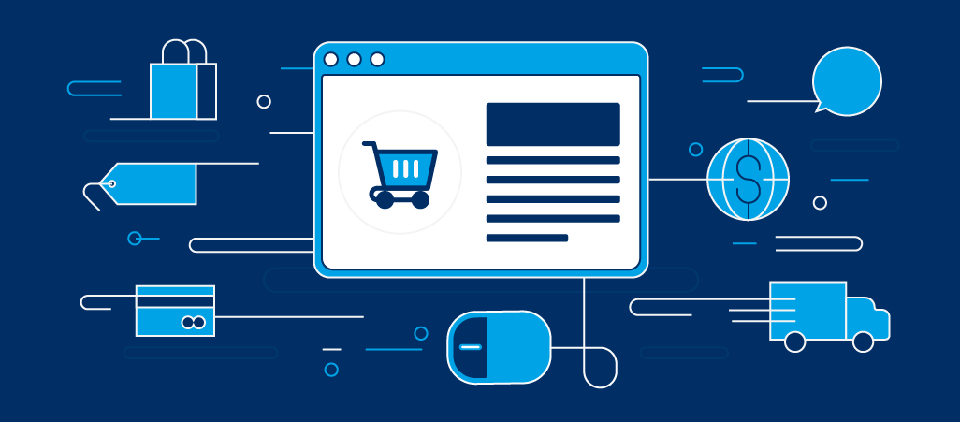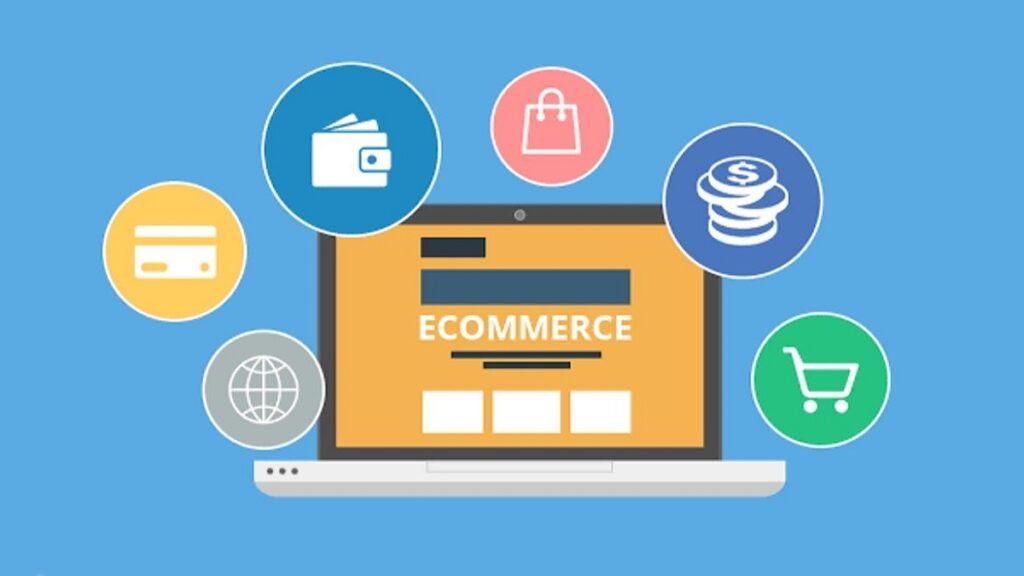Over the last several years, the ecommerce industry has expanded at a never-before-seen pace. Businesses have seen the promise of ecommerce from the start of the Internet. It’s not all sunshine and flowers, even while the potential seems unmatched. In an economy that is evolving quickly, firms confront several ecommerce issues. Knowing how to overcome ecommerce challenges is vital to thrive.
You can never predict everything. However, you’ll have a better chance of starting a profitable online business if you take the time to think about these typical ecommerce issues. A warning is a weapon!
Top Ecommerce Challenges And How To Overcome Them

1. Issue Of Growing Competition And The Solution
One of the biggest challenges facing ecommerce firms is market competition. It might take some time to stand out from the crowd when there are so many companies vying for consumers’ attention. Nevertheless, despite fierce competition, you may make your firm succeed with a little strategic preparation and innovative thinking.
Analyzing your competitors is a smart answer to how to overcome ecommerce challenges. It enables you to determine your competitors’ advantages and disadvantages and modify your approach appropriately. Making judgments about how to position yourself in the market will be made easier if you are aware of what other companies are doing with respect to pricing, product offers, marketing tactics, micromarketing, and customer service.
Any product or service you provide has to be of the highest quality in order to attract repeat business. Try to set yourself apart from the competition if there are already a number of businesses providing comparable goods by coming up with exceptional discounts or exclusive deals that no one else is giving. This could work well for attracting audiences that are interested in experiences that are exclusive to your business.
2. Data Capitalization And The Solution
Integrating an organization’s ecommerce division into its broader hierarchical structure is one of the main ecommerce issues that firms encounter. Businesses need to implement data-centric solutions for that to occur. This is essential for monitoring average order values across several channels, including ecommerce, and maintaining KPIs.
To acquire the right results, a setup is needed for data collection and subsequent application of the results. This may help companies steer clear of other ecommerce management problems and make better long-term choices.
It is necessary to integrate the ecommerce function and make it a significant part of the whole company. To monitor the company’s cross-digital performance, ecommerce must be appropriately integrated rather than being treated as a distinct, segregated operation.
Using a POS system that works well with your ecommerce platform is one efficient method to do this, as it enables you to monitor payments from various channels and conduct more accurate performance analysis. It’s among the greatest solutions for significant ecommerce issues.
3. Increased Customer Expectations And The Solution
Managing consumer expectations is another of the most prevalent ecommerce problems that companies encounter. Assessing the whole user experience is crucial as you work to establish your company’s reputation and concentrate on your brand image.
It is crucial to manage the increasing expectations of your consumers, and to find ways to overcome ecommerce challenges like these, you must know what people find appealing about your brand. You must prioritize the user experience and use pertinent design principles that align with your company’s operations. Undoubtedly, this is among the most significant ecommerce obstacles that companies encounter.
Such e-business difficulties need careful preparation and consideration. If you wish to solve this problem for your ecommerce firm, you must have a thorough awareness of current web design trends. A thorough examination of current patterns can assist you in determining what adjustments are necessary and in assisting your company in making the necessary adjustments.
4. Insufficient Customer Engagement And The Solution
Maintaining consumer engagement requires striking a delicate balance between giving them useful information and not overloading them. It’s similar to walking a tightrope: you want to engage your clients, but you don’t want to overwhelm them. In ecommerce, figuring out this golden mean may be difficult, but when done correctly, lead nurturing can provide significant benefits for your company.
You should provide prospective buyers with pertinent material at every point of their decision-making process to cultivate connections with them. You may begin by dividing your audience into groups according to shared traits like hobbies or demographics.
Once you’ve determined these groups, instead of attempting to sell them anything straight away, craft messages that are particular to each group and provide resources or guidance that will help them meet their requirements. Additionally, employ push alerts or email outreach efforts to ensure that your leads don’t lose out on any possibilities because of time limits or other uncontrollable circumstances.
5. Logistics Issues And The Solution
One of the largest ecommerce problems that companies have is resolving logistical concerns. It is your responsibility as a company owner to know how to overcome ecommerce challenges and to ensure that deliveries are delivered on schedule. Your company may suffer if there are supply chain problems or delivery delays.
Do you utilize a third-party logistics company, or do you separate your goods and distribute them across many warehouses around the nation? You will lose a lot of goodwill in this area if your consumers don’t get their orders on time. One of the hardest things for an internet firm to concentrate on is ecommerce delivery. You won’t be able to launch your company if you can’t manage your shipping.
Tracking every order is a significant ecommerce issue that the majority of e-stores encounter during the sales craze. They cannot provide their clients with tracking numbers unless they have a shipping service with tracking capabilities. After one negative encounter, this might make these clients very reluctant, which can be a big turn-off. It’s one of the most significant ecommerce issues that is readily resolved.
The shipping option that works best for you will depend on the type of your company. For example, should you manage shipping internally or collaborate with a fulfillment center? To be sure you are in the clear, it is crucial to test out a few delivery choices. However, be careful not to allow shipping to significantly reduce your profits!
6. Low Conversion Rates And The Solution
One of the most difficult things about ecommerce is persuading customers to buy anything from your business. After all, several other businesses provide comparable goods and services. However, how can you draw them in and give them the impression that they are receiving a special offer? Make it simple with an intuitive checkout process. Avoid letting lengthy paperwork and intricate payment procedures prevent you from converting those prospective clients.
Simplify the checkout process as much as you can by minimizing the number of clicks required to complete a transaction, offering a variety of payment methods (such as PayPal, credit cards, and others), and ensuring that all information is visible before a customer hits the “buy” button. Utilize a variety of ecommerce marketing tools to analyze your website and get new insights for future improvements.
Offer exclusive discounts or loyalty benefits to encourage customers to make their purchases since everyone enjoys a good bargain. Whatever works best for your company and your consumers, you may provide free delivery, first dibs on new goods, or even temporary discounts on well-liked items.
Another option is to include a QR code with your logo, which will take them to the checkout page where the discount has already been used. The consumers find it extremely handy! To reach the correct people who could be interested in what you have to offer, you should, of course, utilize targeted marketing campaigns (make sure the advertisements include relevant keywords!).
7. Shopping Cart Abandonment And The Solution
Let’s face it: between 59.2% and 79.8% of online buyers leave their carts, costing many businesses money. Cart abandonment is one of the most challenging ecommerce issues, and it may be caused by a variety of factors, including a lack of trust, expensive shipping costs, or difficult checkout procedures.
If you want to know the ways to overcome ecommerce challenges, make sure that every component of your app’s or website’s navigation system functions correctly to prevent users from being lost. As previously said, a simplified checkout procedure that eliminates the need for extra information keeps consumers from becoming frustrated or giving up.
Additionally, ensure that buttons such as “add item/product” are prominently displayed on every page so that visitors are aware of where to click when they are prepared to complete a purchase.
8. Limited Scalability Options And The Solution
One of the most important elements for the success of ecommerce is scalability. How often may new features and content be released? Do you own the tools and technologies necessary for rapid expansion, such as headless commerce? You must have a well-thought-out strategy for how your company will expand over time without compromising on quality or client happiness.
This ecommerce problem may be solved by using an agile methodology, which enables you to swiftly adjust and react to client requests. Being adaptable and creative in your thinking can help you remain competitive in a market that is always evolving.
Investing in automation is one method to achieve agility. You may increase productivity and decrease human error by automating tasks like email marketing, query processing, and inventory management. Email marketing may be streamlined with the help of platforms like Selzy, Mailchimp, and SendPulse, which guarantee improved audience engagement.
Saving time, money, and energy will allow you to concentrate on other facets of expanding your company rather than worrying about routine duties detracting from output. Additionally, monitor important analytics indicators to find opportunities for improvement more quickly. You may better understand consumer behavior and meet their requirements by using analytics solutions like Google Analytics.
The Necessity of Knowledge of Ecommerce Challenges
In today’s digital age, ecommerce has emerged as a cornerstone of global business, providing companies with opportunities to reach a broader audience. However, with these opportunities come a unique set of challenges that require a deep understanding of how to overcome ecommerce challenges to succeed in this highly competitive market.
One of the key challenges in ecommerce is managing logistics and supply chain operations. Ensuring timely delivery, handling returns, and managing inventory effectively can be complex, especially for businesses scaling up their operations. A lack of knowledge in these areas can lead to delays, stockouts, or customer dissatisfaction.
Another significant challenge is maintaining data security. With sensitive customer information being exchanged online, ecommerce businesses are prime targets for cyberattacks. A breach can not only harm a company’s reputation but also result in financial and legal consequences. Understanding the latest cybersecurity measures and best practices is essential for safeguarding customer data and maintaining trust.
Ecommerce platforms also face challenges in terms of customer acquisition and retention. The online marketplace is saturated with options, making it difficult for businesses to stand out. Knowledge of digital marketing strategies, such as search engine optimization (SEO), pay-per-click advertising (PPC), and social media engagement, is critical for attracting and retaining customers.
Furthermore, adapting to the ever-evolving nature of technology is a continual challenge. Ecommerce trends, tools, and platforms evolve rapidly, and staying informed about the latest innovations is essential to remain competitive. Businesses that neglect this risk falling behind or failing to capitalize on new opportunities.
In conclusion, understanding ecommerce challenges is essential for businesses aiming for long-term success. By proactively addressing logistics, security, marketing, and technological adaptation, companies can navigate the complexities of the online marketplace and thrive in a dynamic environment.
FAQ
Q: How can I increase traffic to my ecommerce store?
A: To boost traffic, focus on SEO optimization, content marketing, and social media engagement. Use targeted ads on platforms like Google and Facebook, and consider influencer collaborations. Email marketing and referral programs can also help attract more visitors.
Q: What can I do to reduce cart abandonment rates?
A: Improve checkout by offering guest checkout options, multiple payment methods, and transparent pricing (no hidden fees). Send abandoned cart reminders via email or SMS, and provide incentives like discounts or free shipping to encourage completion.
Q: How do I handle supply chain disruptions?
A: Diversify suppliers to avoid dependency on a single source. Maintain strong relationships with backup vendors and optimize inventory management with demand forecasting. Communicate transparently with customers about delays and offer alternatives when possible.






